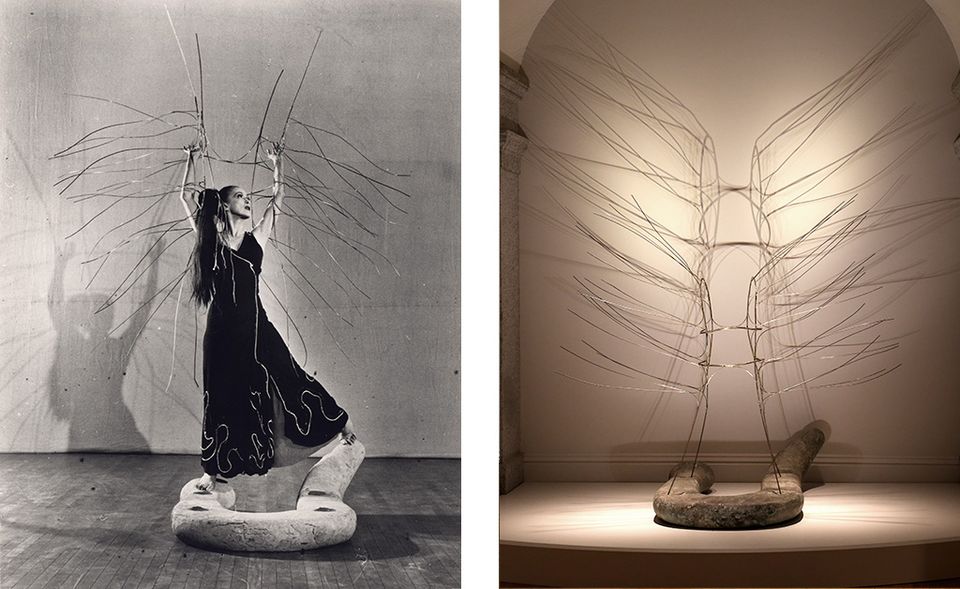
SAAM's sculpture curator, Karen Lemmey, gives us some insight about the close relationship between sculptor, Isamu Noguchi and dancer, Martha Graham as referenced in our exhibition, Isamu Noguchi, Archaic/Modern.
On March 3, SAAM hosted the Martha Graham Dance Company for two performances of Cave of the Heart. Over the course of half a century, Noguchi and Graham closely collaborated on numerous set designs for her groundbreaking modern dances. They held each other in the highest regard—Noguchi once said, "I felt that I was an extension of Martha and that she was an extension of me," while Graham described sharing "an unspoken language" with the sculptor.
Graham's Cave of the Heart premiered in 1946 and retells the ancient Greek myth of Medea, a sorceress who is consumed by jealousy when her husband Jason abandons her and their children to marry the Princess of Corinth for political gains. Graham's dance distills the story of the absolute destructive powers of jealousy in the movements of four dancers: Medea, Jason, the Chorus, and the ill-fated princess. Noguchi's spare and elegant set design is well suited to Graham's choreography. His row of flat stones represents the Greek archipelago across which Jason leaps in his ambitions to consolidate his power through conquest. A large grey form at the back of the stage, Noguchi's abstraction of a human aorta, serves as an emotive home base for the Chorus, who is omniscient but powerless to stop the unfurling tragedy. The unequivocal star of the stage is Medea, the role originally played by Graham for whom Noguchi created Spider Dress that sits on his Serpent, both of which are on view in the Noguchi exhibition.
Throughout most of the dance the Spider Dress stands majestically at the front of the stage, as still as a sentinel. But as the performance draws to a close, Medea slides into the cage-like brass dress and dances, reveling in her evil deeds: the murder of the Princess and her own children. Noguchi dubbed his sculpture a "dress of transformation" while Graham called it "a chariot of flames" that carries Medea back to her father, the Sun. Noguchi admired how Graham used his sculptures "as extensions of her own anatomy," but the Spider Dress seems to come alive as if it were a fifth character. Even after the dancers leave the Spider Dress behind as they take their final bows, the sculpture continues to scintillate.
The matinee workshop, organized by SAAM's departments of Education and Public Programs, was attended by 240 local students and led by Janet Eilber, artistic director of the Martha Graham Dance Company. The sold-out evening performance was followed by a discussion with Janet Eilber, myself, and Dakin Hart, guest curator of Isamu Noguchi, Archaic/Modern and senior curator at The Noguchi Museum.
Crucial support for both performances came from the Secretary of the Smithsonian and the Smithsonian National Board. The evening performance was dedicated to the memory of Jack Rachlin, a longtime volunteer and an ardent supporter of SAAM's sculpture program, who passed away on February 22, 2017.
Isamu Noguchi, Archaic/Modern, closes March 19.


















